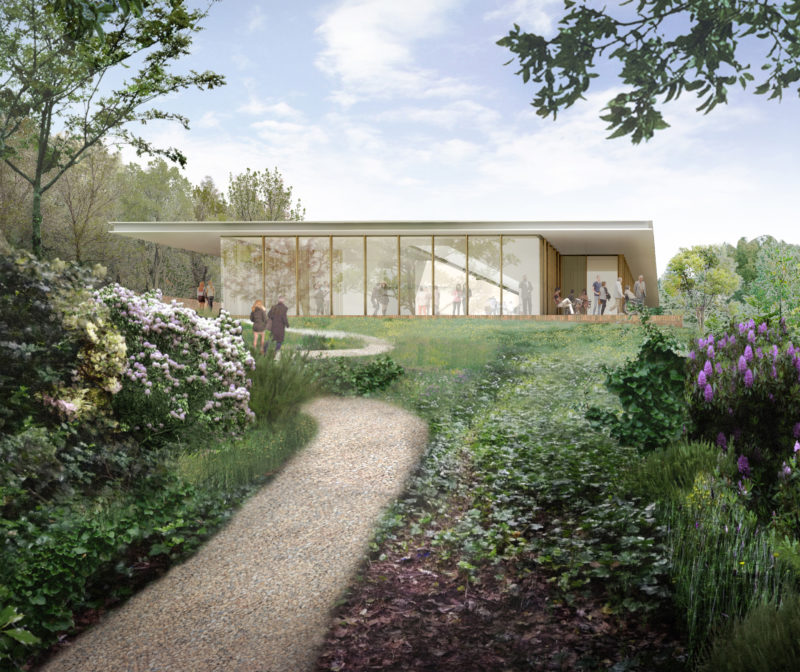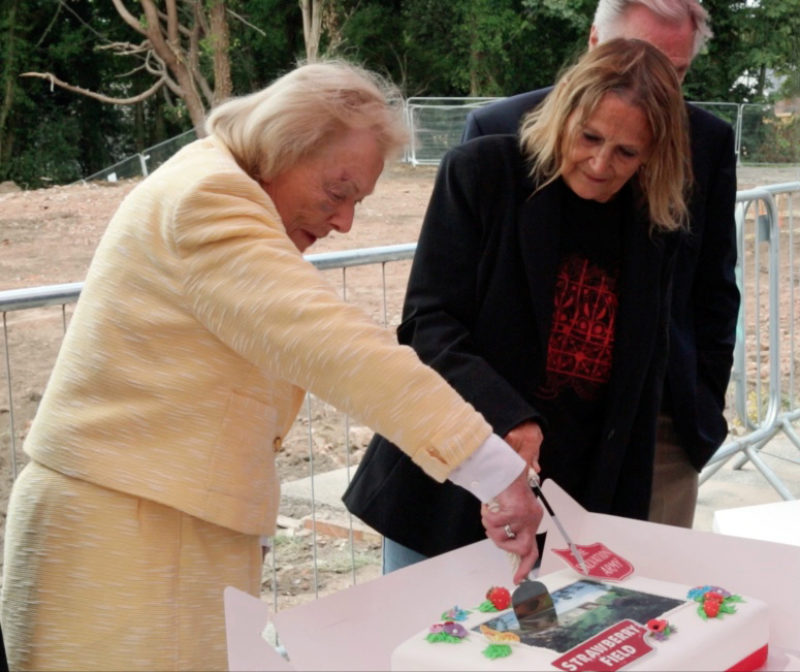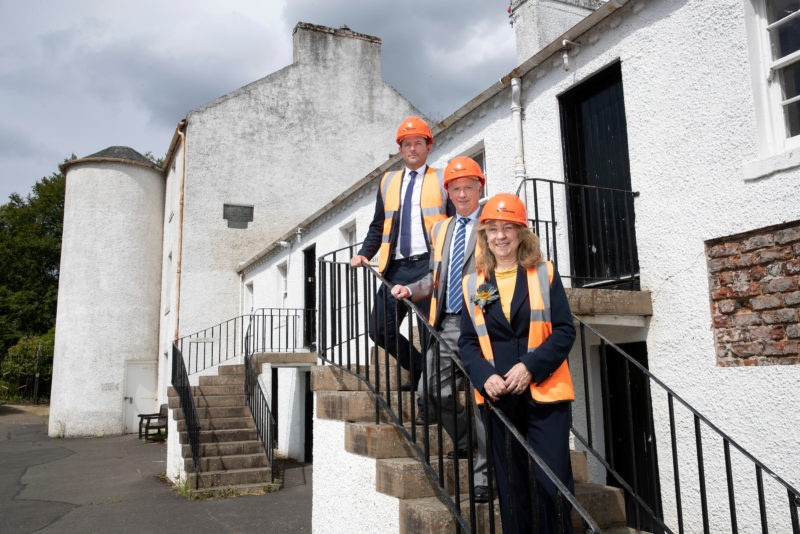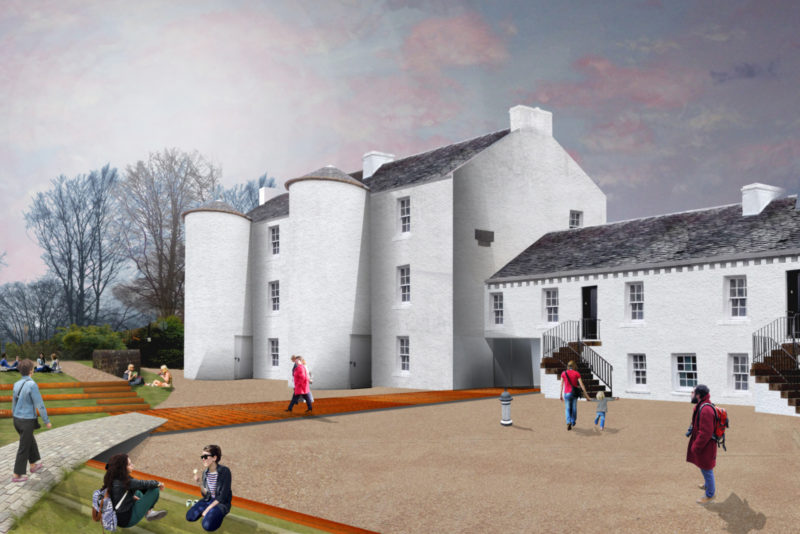Two Ground-breaking Projects for August
Work has begun on a new Hoskins Architects designed centre at Strawberry Field, Liverpool, where John Lennon once played as a child. The project, being undertaken by church and charity The Salvation Army, will see the creation of the first ever visitor facilities on the world-famous site, alongside a vocational training and work placement hub for young people with learning disabilities and is expected to complete in the summer of 2019.


The 1,350m2 building has been designed to maximise views and physical connections to the mature ‘park’ setting. The visitor attraction, telling the story of Lennon’s childhood connection with Strawberry Field, will be located to the north of the site, visible from the famous red gates at Beaconsfield Road and comprises exhibition area, glazed shop and café. The ‘Steps to Work’ training facility will be located at the more private, southern end of the site.
Generous shared stairs at the heart of the building are designed to encourage interaction between building users, while a large over sailing roof plane will create sheltered edges and physically unite the elements to create a pavilion in the park.
A ground-breaking ceremony took place on the 31st of July, with Major Roger Batt, The Salvation Army Divisional Leader welcoming Julia Baird (John Lennon’s sister and Honorary President of the Strawberry Field project), Lady Judy Martin OBE, Cliff Cooper (Founder and CEO Orange Music Electronic.co) and young adults who are amongst the first group of trainees to pass through the Steps to Work placement hub.
In the same week construction work began on-site on the much-anticipated Birthplace Project to transform The David Livingstone Centre into a world-class visitor attraction in Blantyre, the civil parish in South Lanarkshire, Scotland, after which Malawi’s second largest city is named.
Hoskins Architects has been working with the David Livingstone Trust to restore and renovate the site which includes the iconic Shuttle Row mill-workers’ tenement where the legendary explorer and missionary was born and raised.


The Birthplace Project is jointly funded by The National Lottery through The Heritage Lottery Fund, the Scottish Government and Historic Environment Scotland. The funding will see David Livingstone’s birthplace redeveloped to provide a vibrant new museum, setting Scotland in a global context and celebrating the inspirational story of how a poor millworker became one of the most popular British heroes of the Victorian era and a hero of some Sub Saharan African countries today.
The project will include the renewal of the historic buildings, a newly interpreted exhibition which will showcase artefacts from the Trust’s collection of 3000 objects and an upgrade of visitor facilities such as the café and shop.
David Livingstone is considered to be of great international importance in terms of his contribution to science, exploration, faith and humanitarianism. Born in 1813 in a cramped mill home, Livingstone started his working life aged ten with 12-hour shifts in the cotton factory.
However, his passion for education, exploration and his deep faith led him to Christian missionary work and 30 years of exploring Africa, often in places where no European had previously ventured. His discoveries – geographic, technical, medical, and social – provided a complex body of knowledge that is still being studied today.
The respect he gained from Sub Saharan individuals, such as Chief Sechele of the Bakwain people, opened the door to missionaries who introduced education and health to the local people, inspired abolitionists of the slave trade, and influenced European and Western attitudes towards Africa.
Find out more about the David Livingstone Trust on their website: https://www.david-livingstone-trust.org